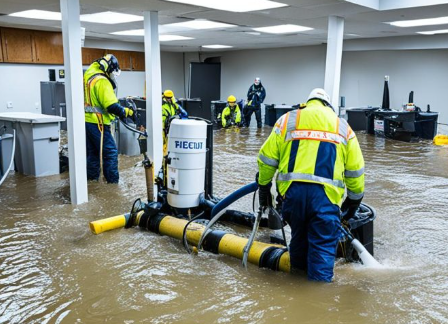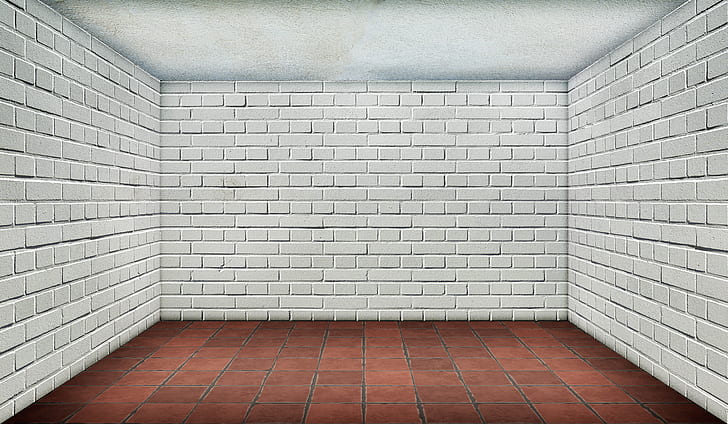When water invades your home unexpectedly, it can lead to extensive damage, emotional stress, and financial burdens. Emergency water damage repair services are critical to prevent the spread of water, restore the affected areas, and protect your property from further damage. This guide will cover what emergency water damage repair entails, its importance, and how to respond effectively in an emergency.
Understanding Emergency Water Damage
Water damage can be caused by various factors, including natural disasters, plumbing failures, and leaks from broken appliances. The severity of water damage can vary, but even minor leaks have the potential to escalate, causing mold growth, structural damage, and weakened foundations. Emergency water damage repair is essential for managing these risks and restoring your property to a safe, livable condition.
Some common sources of water damage include:
- Flooding: Caused by storms, hurricanes, or river overflows, leading to significant property damage.
- Burst Pipes: Often due to freezing temperatures or wear and tear, burst pipes can release large volumes of water.
- Leaking Roofs: Weather conditions and lack of maintenance can lead to roof leaks that gradually worsen if left unaddressed.
- Sewer Backups: Blockages in sewer systems cause contaminated water to flood into homes, posing health hazards.
Each of these water damage types requires immediate attention to avoid extensive repairs and health risks.
The Importance of Prompt Emergency Water Damage Repair
Water damage is progressive; it only takes a few hours for moisture to start causing serious issues. The sooner repairs begin, the less damage will occur, making quick action crucial in any water-related emergency. Here’s why prompt emergency water damage repair is essential:
- Preventing Mold Growth: Mold can begin to grow within 24-48 hours of water exposure. Immediate repairs help remove moisture, reducing the risk of mold proliferation and the related health concerns.
- Reducing Structural Damage: Water weakens building materials such as drywall, wood, and insulation, compromising the structural integrity of the home. Quick repairs reinforce these areas before they become unstable.
- Protecting Valuables and Furniture: Emergency water damage repair helps save valuable items, furniture, and personal belongings, minimizing the loss associated with water damage.
- Avoiding Costly Future Repairs: Addressing water damage immediately often results in lower repair costs, as severe damage can require extensive restoration and even rebuilding.
- Minimizing Health Risks: Exposure to water-damaged areas can lead to respiratory issues, allergies, and other health problems, particularly when sewage or contaminated water is involved.
Steps to Take When Facing Emergency Water Damage
Taking quick action during a water emergency is crucial to mitigating the extent of the damage. Here’s a step-by-step guide on how to handle emergency water damage:
- Ensure Safety First: Turn off electricity to prevent electrocution and be cautious around water-logged areas, especially if the water is contaminated. Evacuate if necessary.
- Locate and Stop the Water Source: Identifying and stopping the source of water is essential. For example, turn off the main water valve if a pipe bursts or call a professional plumber if the source cannot be controlled.
- Call an Emergency Water Damage Repair Service: Professional restoration companies have the expertise and equipment to handle water damage safely and effectively. A 24/7 emergency repair service can respond immediately, assessing the damage and creating a restoration plan.
- Document the Damage: Take photos and videos of the affected areas for insurance purposes. Documentation can help facilitate the insurance claim process and demonstrate the extent of damage.
- Begin Water Extraction and Drying: Emergency repair teams will use specialized equipment like pumps and vacuums to remove water quickly. Industrial fans and dehumidifiers will then be used to dry out the affected areas thoroughly.
- Sanitize and Disinfect: In cases of sewage backup or floodwater, sanitation is critical. Professionals will use disinfectants to ensure that the area is safe and free from bacteria and pathogens.
- Restore and Repair Damaged Areas: Once the area is dried and sanitized, repairs to structural components, floors, walls, and other affected parts can begin, restoring the home to a safe condition.
Emergency Water Damage Repair Process: What to Expect
Professional emergency water damage repair services follow a structured process to ensure efficient, complete restoration. Here’s what the process generally involves:
- Initial Assessment: Technicians assess the extent of the damage, categorizing the water type (clean, gray, or black) and identifying areas needing immediate attention.
- Water Extraction: Using advanced extraction equipment, technicians remove standing water as quickly as possible.
- Drying and Dehumidification: Powerful dehumidifiers and industrial-grade air movers are employed to dry every surface and prevent moisture retention, which can lead to mold growth.
- Cleaning and Sanitizing: Professionals clean and sanitize affected areas using antimicrobial treatments and specialized cleaning products to kill bacteria, prevent mold, and eliminate odors.
- Restoration and Repairs: Restoration includes repairing walls, floors, and ceilings, repainting surfaces, and sometimes replacing certain parts to ensure your home is back to its pre-damage condition.
Choosing a Reliable Emergency Water Damage Repair Service
With so many restoration companies available, choosing the right one is essential for quality repairs and peace of mind. Here are key factors to consider:
- Certification and Experience: Look for certified professionals (such as those certified by the IICRC) who specialize in water damage repair.
- Availability: An emergency repair service should offer 24/7 response to address urgent situations promptly.
- Insurance Assistance: A reputable company will often assist with insurance claims, simplifying the process for the homeowner.
- Equipment and Techniques: Modern equipment and advanced techniques enhance the effectiveness of the repair process, ensuring thorough water extraction, drying, and mold prevention.
- Customer Reviews: Positive reviews and testimonials from past clients indicate reliability and quality service.
Preventing Future Water Damage
Once your home is repaired, take proactive steps to reduce the risk of future water damage:
- Regular Maintenance: Inspect plumbing, roofs, and gutters regularly to catch potential problems before they become emergencies.
- Water Detection Systems: Install water alarms or automatic shut-off valves to detect leaks early and prevent extensive damage.
- Proper Insulation: Insulate pipes to prevent bursting during cold weather and ensure the home is adequately protected.
Conclusion
Emergency water damage repair is essential for protecting your home and health from the harmful effects of water damage. By acting quickly and relying on professional repair services, you can reduce the long-term impact of water damage, prevent mold growth, and restore your home to a safe, habitable condition. Don’t wait until it’s too late—take immediate steps to address water emergencies and work with a trusted repair service to keep your property safe and secure.
Please click here to visit us.



